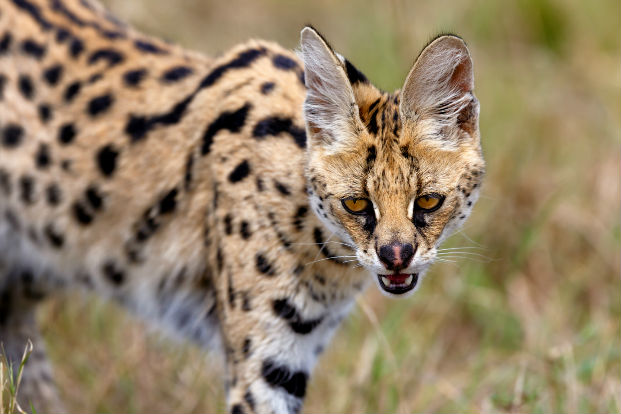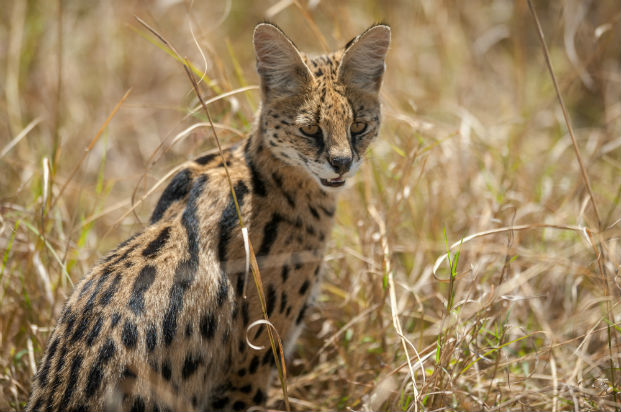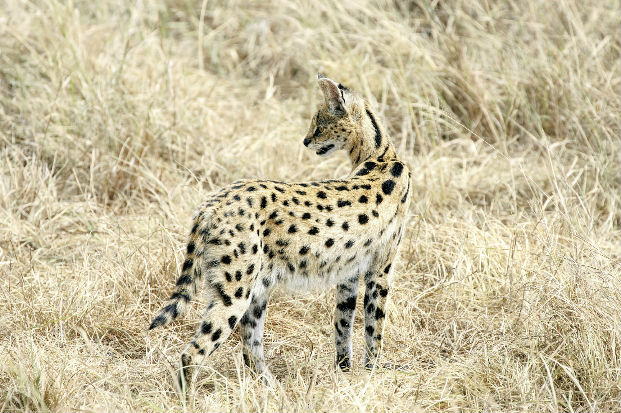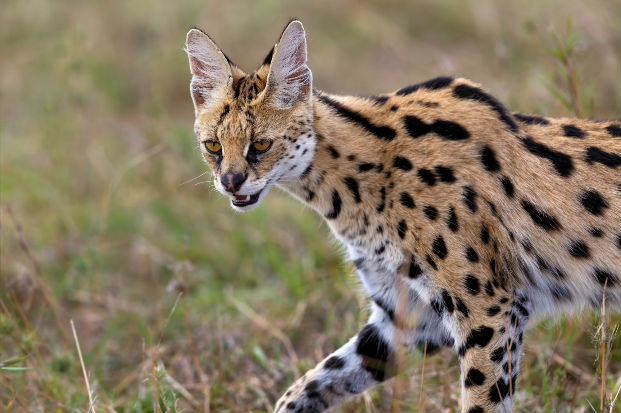Vote for the fact you find most fascinating
Using very powerful hind legs a serval can jump 2.5 m into the air to pluck birds from their flight.
Servals will reach deep into holes after prey utilising their long forelimbs.
It is common for servals to play with their prey. They’ve been seen tossing rats several metres into the air before catching them again.
Servals will scent mark not only by urine spraying (males) and squirting (females) but by rubbing their faces in the soil whilst salivating excessively.
The serval can pinpoint its prey, even if it’s underground, by using its antenna like ears.
Once the serval locates its prey it will jump into the air in a high arching pounce before it comes down fox like on the bird or rodent. These pounces have a 40 to 60% success rate
The long legs of the serval give it the height needed for hunting in long grass so that they have a better chance of seeing and hearing their prey.
The serval is named after the Portugese name for the European lynx, “lobo – cerval”.







